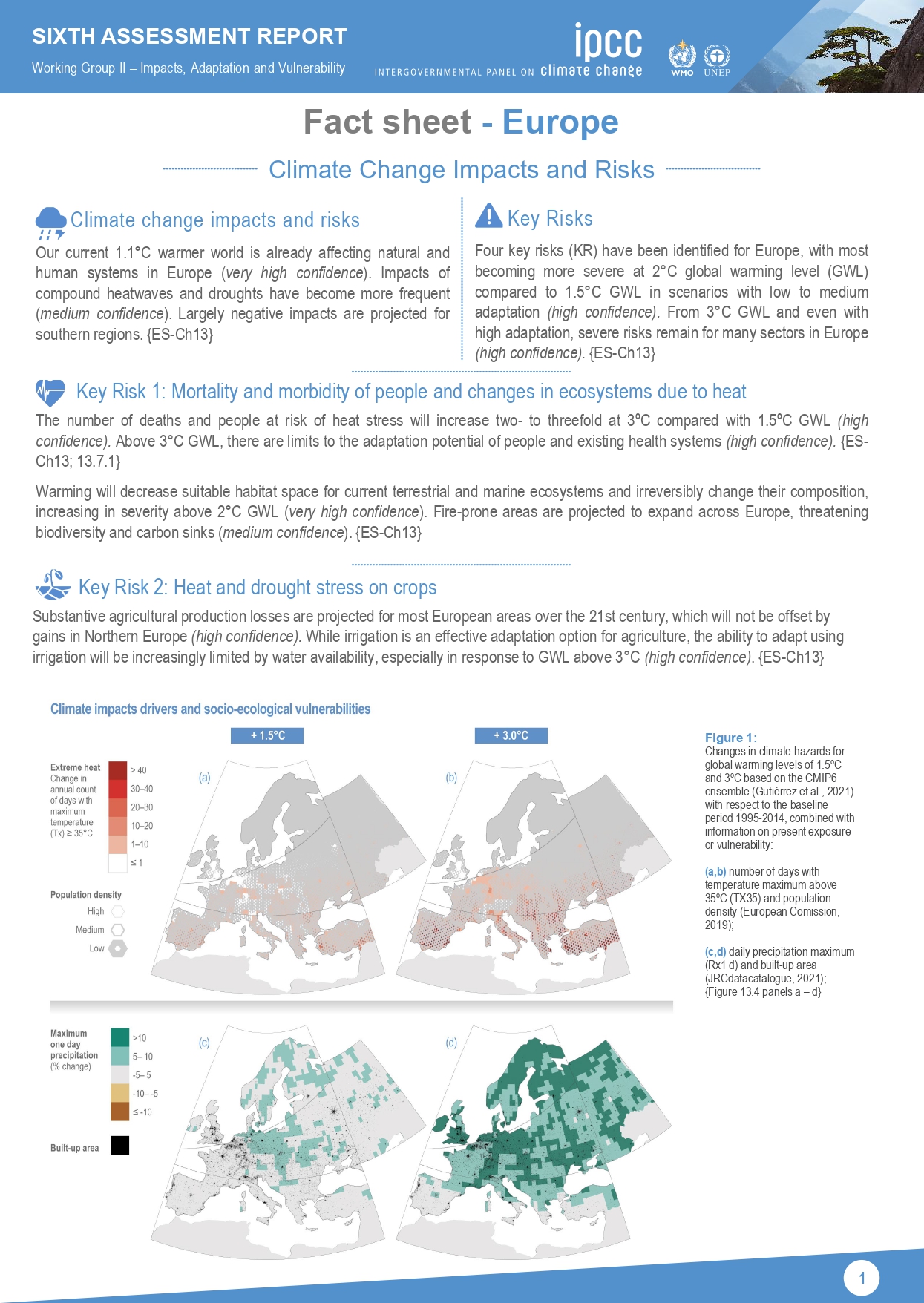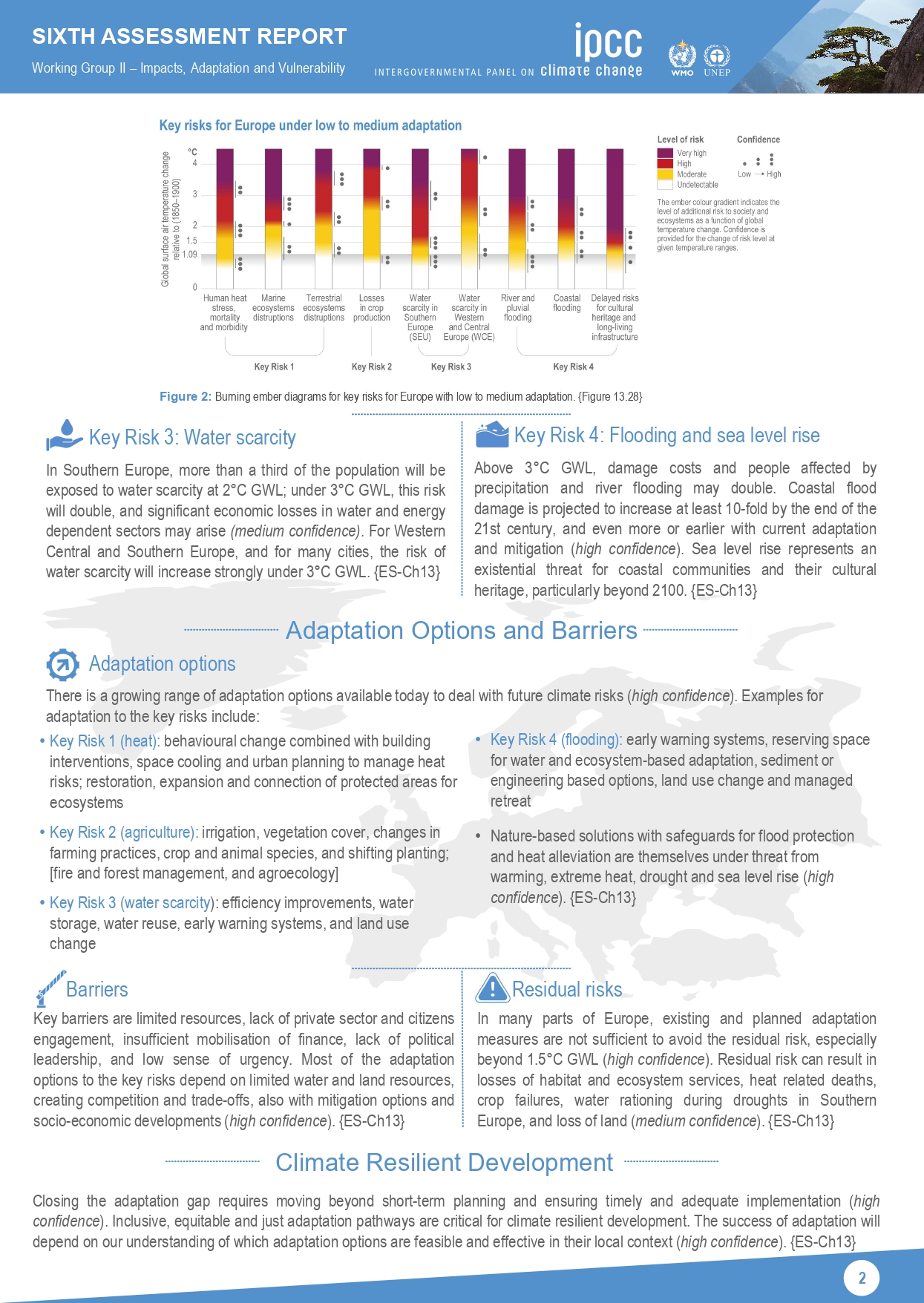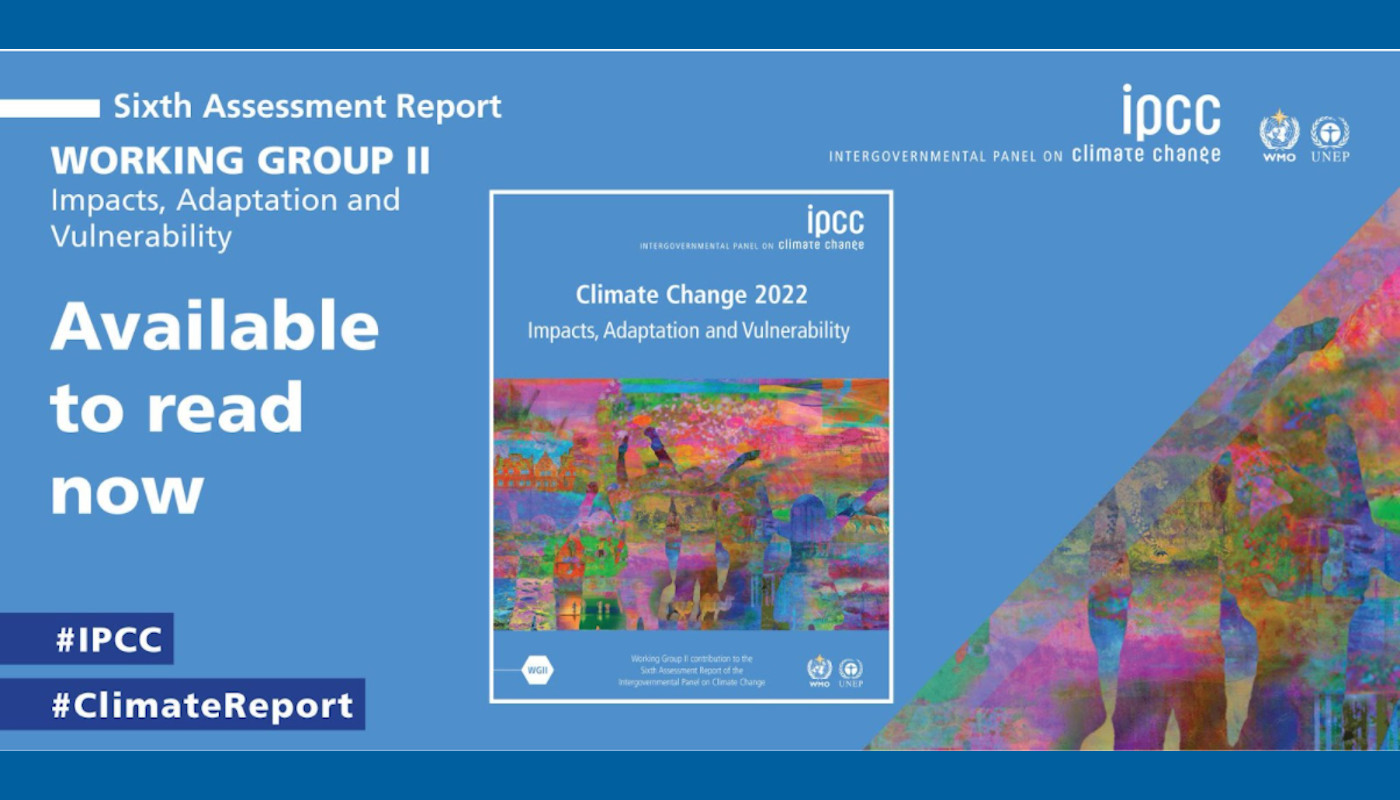Last February 28, 2022, the Intergovernmental Panel on Climate Change (IPCC) published its Working Group II’s contribution to the Sixth Assessment Report: Climate Change 2022: Impacts, Adaptation and Vulnerability Report.
“The Working Group II contribution to the IPCC Sixth Assessment Report assesses the impacts of climate change, looking at ecosystems, biodiversity, and human communities at global and regional levels. It also reviews vulnerabilities and the capacities and limits of the natural world and human societies to adapt to climate change.”
***
CORE project aims at developing a harmonised vision of disaster risk reduction, crisis management awareness and capabilities. Because Climate Change is “a grave and mounting threat to our wellbeing and a healthy planet, [and because] our actions today will shape how people adapt and nature responds to increasing climate risks” (said Hoesung Lee, Chair of the IPCC), CORE will contribute to address natural weather extremes and related climate risks, as well as man-made disasters, to build more resilience in the society.
Such resilience is not only an ability to maintain an essential function or structure, but a capacity of transformation; more precisely and as defined in the IPCC report, resilience is “the capacity of social, economic and ecosystems to cope with a hazardous event or trend or disturbance, responding or reorganising in ways that maintain their essential function, identity and structure as well as biodiversity in case of ecosystems while also maintaining the capacity for adaptation, learning and transformation. Resilience is a positive attribute when it maintains such a capacity for adaptation, learning, and/or transformation.”
***
The Summary for Policymakers is divided in three sections: (i) Observed and Projected Impacts and Risks, (ii) Adaptation Measures and Enabling Conditions, (iii) Climate Resilient Development.
OBSERVED & PROJECTED IMPACTS & RISKS
“The knowledge base on observed and projected impacts and risks generated by climate hazards, exposure and vulnerability has increased with impacts attributed to climate change and key risks identified across the report. Impacts and risks are expressed in terms of their damages, harms, economic, and non-economic losses. Risks from observed vulnerabilities and responses to climate change are highlighted. Risks are projected for the near-term (2021-2040), the mid (2041-2060) and long term (2081-2100), at different global warming levels and for pathways that overshoot 1.5°C global warming level for multiple decades . Complex risks result from multiple climate hazards occurring concurrently, and from multiple risks interacting, compounding overall risk and resulting in risks transmitting through interconnected systems and across regions.”
From CORE, following an assessment of different natural and manmade disasters, an analysis will be undertaken to identify lessons learnt, patterns and trends highlighting best practice. The project will analyse specific risks of natural and anthropogenic origin including cascade effects. In particular, the project will analyse different disaster scenarios including earthquake, tsunami, forest and wildland fires, flash flood, terrorist attack, industrial accident and the Covid-19 pandemic that will be used as a benchmark case.
ADAPTATION MEASURES & ENABLING CONDITIONS
"Adaptation, in response to current climate change, is reducing climate risks and vulnerability mostly via adjustment of existing systems. Many adaptation options exist and are used to help manage projected climate change impacts, but their implementation depends upon the capacity and effectiveness of governance and decision-making processes." For instance, on Future Adaptation Options and their Feasibility, "there are feasible and effective adaptation options which can reduce risks to people and nature. The feasibility of implementing adaptation options in the near-term differs across sectors and regions. The effectiveness of adaptation to reduce climate risk is documented for specific contexts, sectors and regions and will decrease with increasing warming. Integrated, multi-sectoral solutions that address social inequities, differentiate responses based on climate risk and cut across systems, increase the feasibility and effectiveness of adaptation in multiple sector."
CORE will conceptualise a Safety Culture Measurement Toolkit to measure how positive or negative safety culture is in the selected disaster scenarios: (i) definition of specific quantitative and qualitative indicators from different disaster scenarios, regional areas, practitioners, and citizens’ categories. (ii) for providing a tailored comprehensive insight of areas of improvement and priorities of interventions (iii) to build a positive safety culture in all investigated groups: concretely, assess preparedness, reaction, overcoming and learning local actions (in terms of plans and actual operations). For the successful production of the Toolkit, strong links with local communities of demo sites will be established, building connections with local rescue and civil protection agencies, public officers indirectly involved in disaster prevention and management, civil society associations.
CLIMATE RESILIENT DEVELOPMENT
More especially about Climate Resilient Development for Natural and Human Systems, “interactions between changing urban form, exposure and vulnerability can create climate change- induced risks and losses for cities and settlements. However, the global trend of urbanisation also offers a critical opportunity in the near-term, to advance climate resilient development. Integrated, inclusive planning and investment in everyday decision-making about urban infrastructure, including social, ecological and grey/physical infrastructures, can significantly increase the adaptive capacity of urban and rural settlements. Equitable outcomes contribute to multiple benefits for health and well-being and ecosystem services, including for Indigenous Peoples, marginalised and vulnerable communities. Climate resilient development in urban areas also supports adaptive capacity in more rural places through maintaining peri-urban supply chains of goods and services and financial flows. Coastal cities and settlements play an especially important role in advancing climate resilient development”.
CORE will elaborate a Community Resilience Strategy that reflects the capability of a community to understand and anticipate the risk of a hazard, be prepared to response, and reduce the plausible impact and recover fast and better through adaptation practices and evolution. The CORE Community Resilience Strategy will specifically address the preparedness of the identified vulnerable communities for an effective response to the recognized hazard cases. It will adopt a multi-branch approach to improve the functional organization in the vulnerable communities by integrating cultural and indigenous practices into the disaster risk governance structure in each context. Key activities under the development of the Community Resilience Strategy can be listed as below, especially towards policy makers: Critical analysis of past disasters via the identified case studies on their disaster preparedness strategies, Analysis of vulnerable categories, Identification of cultural and heritage aspects, Formulation of risk governance strategy.
***
Please find hereinafter the Report of IPCC: Summary for Policymakers (37 pages), Technical Summary (96 pages) and Full Report (3675 pages).
***



